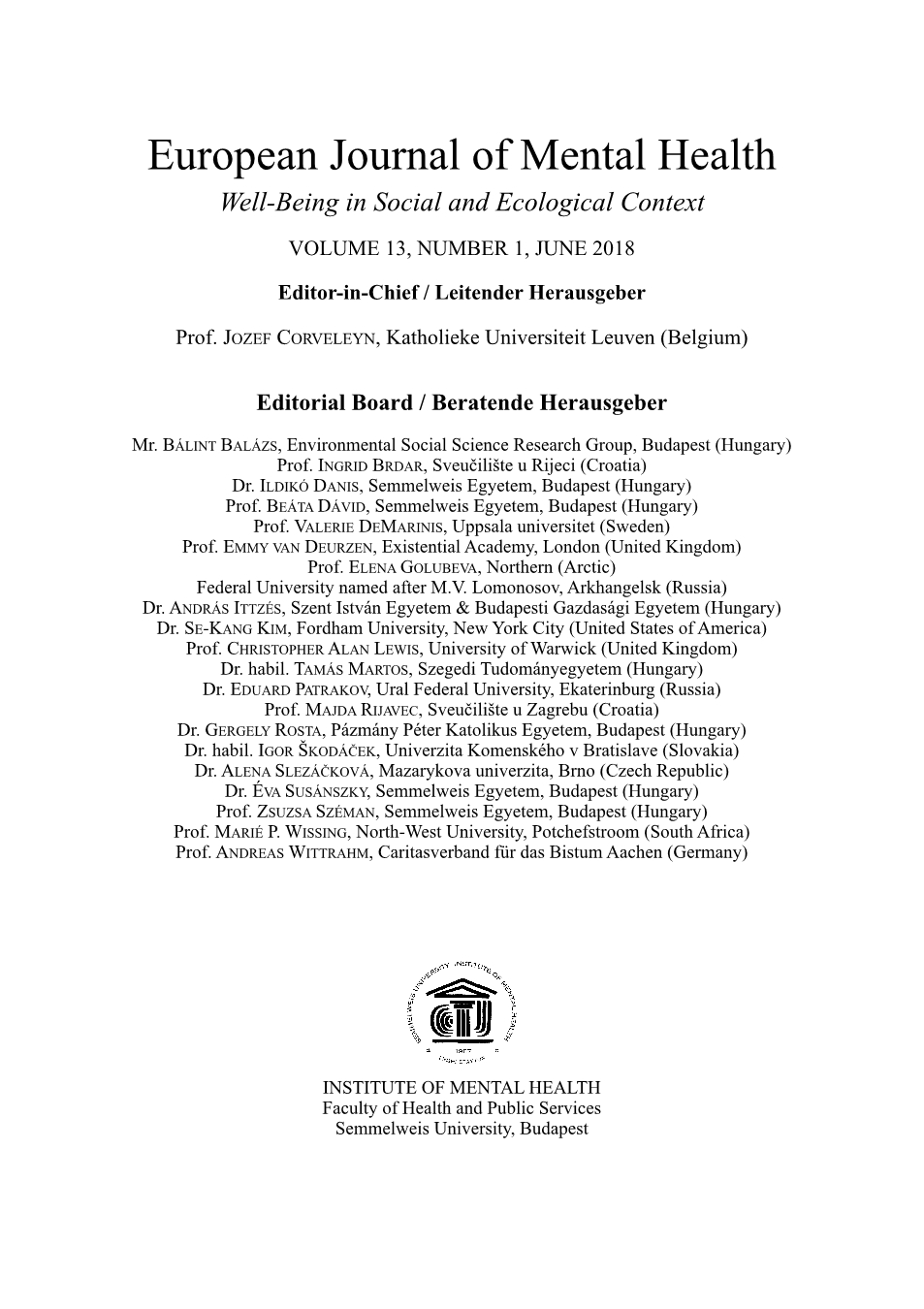A Revised Version of the Multidimensional Health Locus of Control Scales for Labour and Delivery (MHLC-LD-R)
A Revised Version of the Multidimensional Health Locus of Control Scales for Labour and Delivery (MHLC-LD-R)
Author(s): Barna Konkolÿ Thege, Viola Sallay, Tamás MartosSubject(s): Social Sciences
Published by: Semmelweis Egyetem Mentálhigiéné Intézet
Keywords: control beliefs; labour and delivery; test development; validity; reliability
Summary/Abstract: Background: The aim of the present study was to develop and psychometrically investigatea revised version of the Multidimensional Health Locus of Control Scales for Labour and Delivery(MHLC-LD). The rationale for this development was the need to assess labour and delivery specifichealth-related control beliefs regardless of the respondent’s reproductive stage or role in givingbirth (e.g., woman in reproductive age but not pregnant, expectant mother, support person,spouse, health care provider).Methods: Altogether, 991 women (Mage = 26.45 years, SD = 5.42) completed the online survey,767 (77.4%) of whom were pregnant. Beyond the newly developed, revised version of the MultidimensionalHealth Locus of Control Scales for Labour and Delivery (MHLC-LD-R), the test batteryincluded items measuring sociodemographic characteristics, self-rated health, general healthrelatedcontrol beliefs, attitudes toward certain birth-related issues, and level of fulfilment withregards to autonomy and competence needs.Results: Confirmatory factor analyses supported a three-factor solution representing internal-,chance-, and health care professional-related control beliefs. The internal consistency of each4-item subscale was good. The analyses to test construct validity supported the convergent anddivergent validity of the MHLC-LD-R dimensions.Conclusion: The MHLC-LD-R is an economic and psychometrically adequate tool to assess delivery-related control beliefs regardless of the individual’s actual stage in the reproductive life cycleor role in giving birth. Further research is needed using the instrument with partners and other rele -vant actors in the process of labour and delivery.
Journal: European Journal of Mental Health
- Issue Year: 13/2018
- Issue No: 01
- Page Range: 5-18
- Page Count: 14
- Language: English

